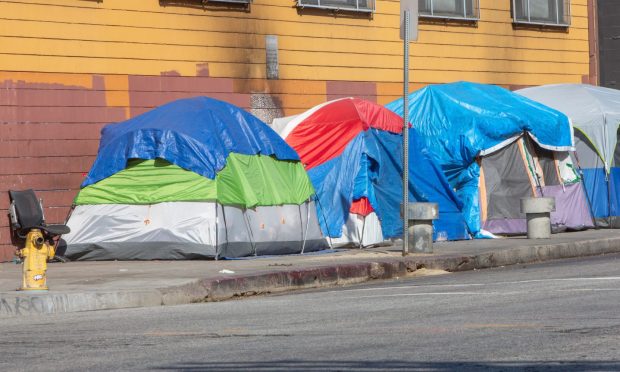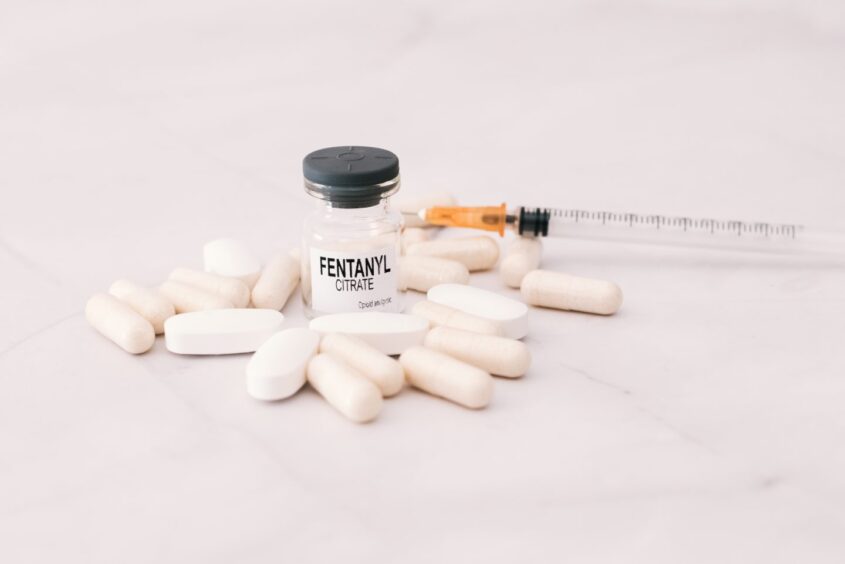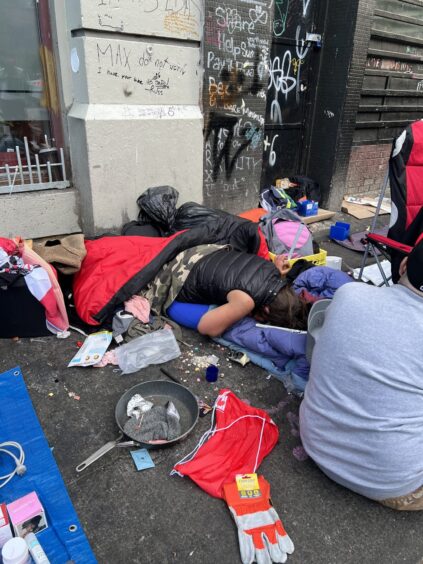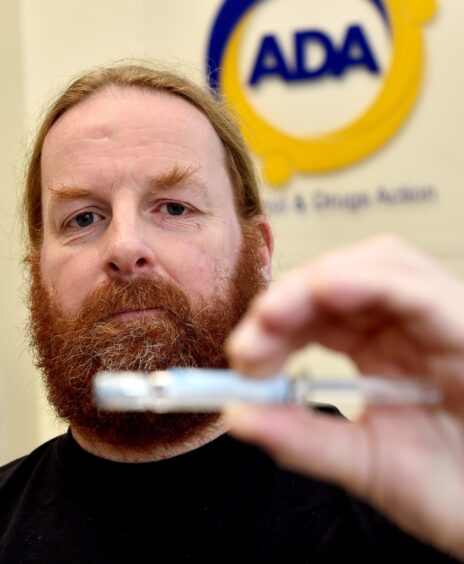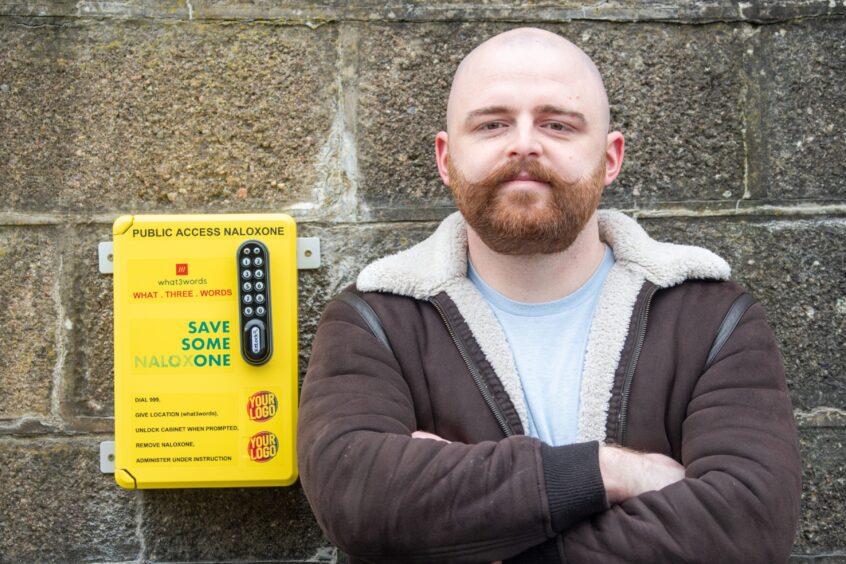It is 50 times more powerful than heroin and causes about 150 overdose deaths a day in the US.
But is fentanyl on its way to Scotland, the overdose capital of Europe?
That’s what a landmark project in Aberdeen aims to find out.
The programme, which is awaiting approval, will supply Aberdeen support workers with small drug testing machines that can identify the ingredients of illicit substances.
The checks — which will also take place in Dundee and Glasgow — will be done on the request of drug users and should help weed out rogue batches that can kill.
But those behind the project also want the checks to help build a database of the north-east’s street drugs to fill in large knowledge gaps over what exactly is out there.
That in turn will allow them to sound the alarm on whether synthetic opioids such as fentanyl have crossed the Atlantic.
“A lot of our clients talk about how there’s something that they’ve bought or are using that is much stronger than normal,” says Simon Pringle, services manager for Alcohol & Drugs Action, the Aberdeen-based charity that is a driving force behind the new testing programme.
“They say they think it’s a synthetic opioid but there’s no actual way of telling at the moment.”
The checks, Pringle says, will change that.
“That’s hugely exciting, because it allows us to plan and react.”
Fentanyl’s trail of destruction in North America
The stakes for the project are high.
Fentanyl — nicknamed the “Crazy One” by drug dealers — has left a trail of destruction wherever it has gained a foothold in the US and Canada.
It first made inroads into the country as an overprescribed legal painkiller, hooking unsuspecting users into dependency.
A crackdown created a market for illegally-made fentanyl, which is relatively easy to make and sometimes mixed with other drugs such as heroin or cocaine — with devastating consequences.
Last year, fentanyl killed more Americans aged 18-49 than traffic accidents or guns, according to recent investigation by The Times.
In British Columbia last year, a Canadian province with a similar-sized population to Scotland, seven people a day died from unregulated drug overdoses, with fentanyl the leading culprit.
“There’s lots of different substances out there that we’ve probably not yet seen,” Simon says.
“There’s a lot in the East Coast of the US, for example that we’ll probably start seeing coming through into Ireland and then into Scotland. It’s one of those things that we have to futureproof.”
‘It’s an ever-changing scene’
ADA and NHS Grampian unveiled the drug check project last week alongside Scotland’s drugs and alcohol policy minister Christina McKelvie.
They have submitted a Home Office licence application to carry out the tests, backed up by sending samples to a national testing laboratory for in-depth analysis.
By mapping street drugs, ADA hopes to get more insight into the types of drugs that are in Scotland, something which has always been difficult.
The results of the checks will feed into RADAR, Public Health Scotland’s surveillance of substances circulating in Scotland.
“It’s an ever-changing scene,” says Pringle. “Five years ago, we wouldn’t have been talking about [synthetic opioids] at all. Now, there are a lot more high-grade laboratories across the world that are making these things.”
The terrible toll of Scotland’s overdose statistics
Scotland already has Europe’s worst drug fatality record — the number of deaths is three times higher per capita than in the next worst European country — so the prospect of an influx of synthetic opioids such as fentanyl is especially concerning.
It was partly the motivation for Balmedie paramedic Kieran Whitford’s efforts to bring public-access naloxone boxes to Aberdeen, which he unveiled last month.
Naloxone reverses the effects of opioid overdoses, which Whitford believes could become more common in the north-east as synthetic opioids become more prevalent.
But wider pressures are also at play.
According to NHS Grampian public health consultant John Mooney, a clampdown by the ruling Taliban in Afghanistan on opium production has put a squeeze on Europe’s heroin supply.
Previously, a plentiful supply of heroin in Europe kept synthetic opioids at bay, however if shortages happen it could give them an open introduction.
“There is the possibility that other drugs might start to gain a foothold,” Mooney explains. “Most particularly, the concern is around the synthetic opioids.”
Drugs strong enough to fell a charging rhino
Meanwhile, fentanyl is not the only drug in the new project’s sights.
Xylazine caused its first UK death only last year but the drug, which a sedative and not an opioid, is ringing alarm bells because of its potency.
“It’s basically what you need in your tranquilizer dart if you’re being faced with a charging rhinoceros,” says Mooney, who warns that it has been found contaminating batches of heroin and synthetic opioids.
“So that’s another reason why we need the drug testing program. It isn’t just about identifying stronger synthetic opiates. There are a number of other drugs out there that are that are causing concern.”
And these are just the ones we know about. New substances appear where necessity or demand arises.
“Ultimately, it’s a business,” explains ADA’s Simon Pringle. “If there’s a market for it, then people will be interested in trying to get that into the market.”
